Unfortunately, I don’t have much more of an answer on this than you do. Probably, if you have a lush green lawn and your irrigation is making puddles in the street, you are using too much.

And probably if your yard looks like this, or you don’t have a yard, you are doing pretty well.

But there are lots of yards that are in between. All of the yards shown below look terrific and seem to have pretty drought-tolerant plantings. The residents may be wondering, are they saving enough?
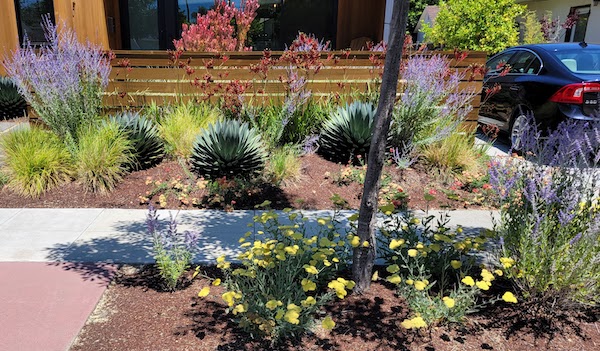
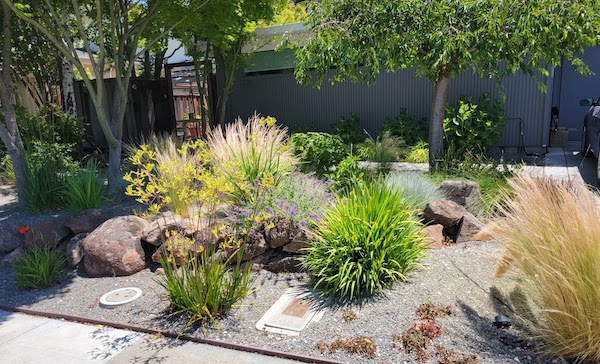

How do we know when we’ve done enough? I have no idea. But I thought I’d share how much water my house uses and maybe you will share yours and we’ll get some collective idea of where we’re at.
My house uses a boatload of water, despite our efforts over the last three years to use less. Here is a chart showing our monthly water use.
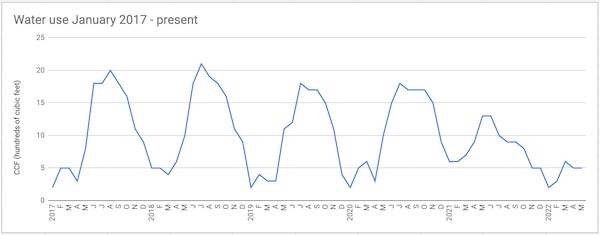
Monthly water use at my house from January 2017 through May 2022
You can see that our water use is almost all for irrigation, which is turned down in winter months. (1) In 2019 our gardener switched all the irrigation to once a week. You can see we used less in the hot summer months but we used more during other months because there was little rain. (The peaks of the graph are shorter but wider.) Look at how much water we used in January and February of 2021 relative to previous years. It’s ironic how in a drought you end up needing to use more water.
Last summer our gardener cut back on irrigation even more, switching several zones to water only once every ten days (2) and cutting back further on irrigation times. I knew that we would lose the thirstier plants but that was okay. It was a sort of survival of the fittest competition. The backyard lawn started looking worse and worse, and in September we mulched over it.
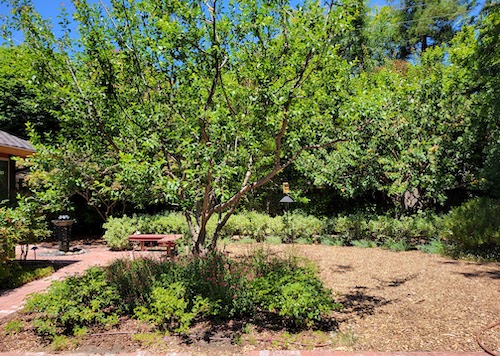
We mulched over the lawn last fall.
I’m not sure what our water use will look like this summer, but I believe we’ve made a decent dent relative to 2019 and even 2020-21.
But is it enough? We still use an enormous amount of water. If we use 10 CCF (3) in one summer month, which represents a lot of savings, that is still about 250 gallons per day. With only two people in the house that comes out to 125 gallons per person per day. The map in this article indicates that per capita water use in 2020 in East Palo Alto was 40 gallons per person per day, 64 in Mountain View, 71 in Menlo Park, and 101 in Pleasanton. Ooh, hey, it is 125 in Los Altos. I am not alone! (To be fair, though, the average month at our house is probably lower than 10 CCF.)
Last summer I measured our water use every day for a few months.
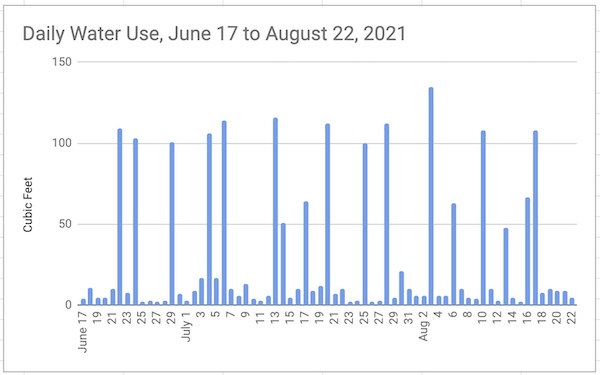
The irrigation days dominate, using over 750 gallons of water (100 cubic feet). The other days we use anywhere from 4-10 cubic feet, which is 30-75 gallons. Even that seemed like a lot to me. When we had no showers or laundry or dishwasher, we still used 30 gallons. On what? But the meter doesn’t show a leak and given the scale of our irrigation use, I didn’t bother to investigate.
Could we use less if asked, without killing even more plants? I’m not sure. The lot is big -- 9200 sf -- and the house and driveway take up just 2500 sf, leaving a lot of greenery that needs water. There is a big pepper tree in front , an even bigger elm in back, plus all kinds of hedges, smaller trees, and shrubs galore. These are established plants, not very water hungry, but they still need water. The front irrigation runs every ten days, one zone for 15 minutes, another for 10, and a drip area for 45. The back irrigation runs weekly, with five zones at 15 minutes and a drip at 30. It’s about 2.5 hours a week, and will probably be more as the days get hotter. (4)
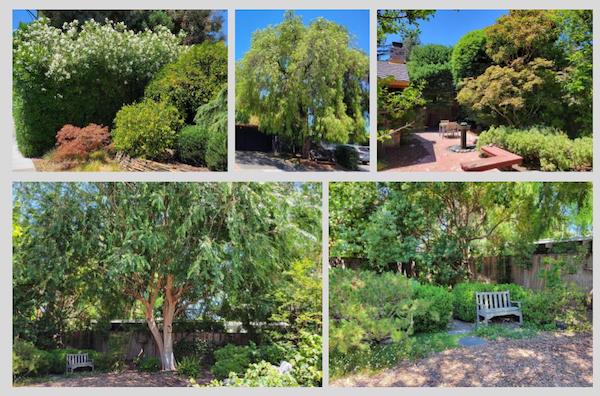
Just some of the plants I am watering.
Moreover, at some point I want to plant the recently mulched area in my yard, which will mean even more water use, especially when the plants are young. I will try to select drought-tolerant natives, but still.
Where is all of this headed? I don’t think Palo Alto will be sending out the Plant Police, but I wonder how it’s going to sort out. If the drought continues, how should we evolve our yards? I don’t know.
Does anyone else want to share how much water you are using, where you have saved water, where you think most of your water is going now, and if there’s anywhere you can’t imagine cutting back?
Notes and References
1. There’s still some irrigation in winter, for underneath the extended roofline.
2. Before this I didn’t even know you could water every ten days. The relevant setting is called “Skip days” on my Rainbird irrigation box.
3. 1 CCF = 100 cubic feet = 748 gallons.
4. I don’t know which types of spray heads the irrigation uses or, more generally, how much water each zone uses per minute.
Current Climate Data (May 2022)
Global impacts, US impacts, CO2 metric, Climate dashboard
Comment Guidelines
I hope that your contributions will be an important part of this blog. To keep the discussion productive, please adhere to these guidelines or your comment may be edited or removed.
- Avoid disrespectful, disparaging, snide, angry, or ad hominem comments.
- Stay fact-based and refer to reputable sources.
- Stay on topic.
- In general, maintain this as a welcoming space for all readers.



